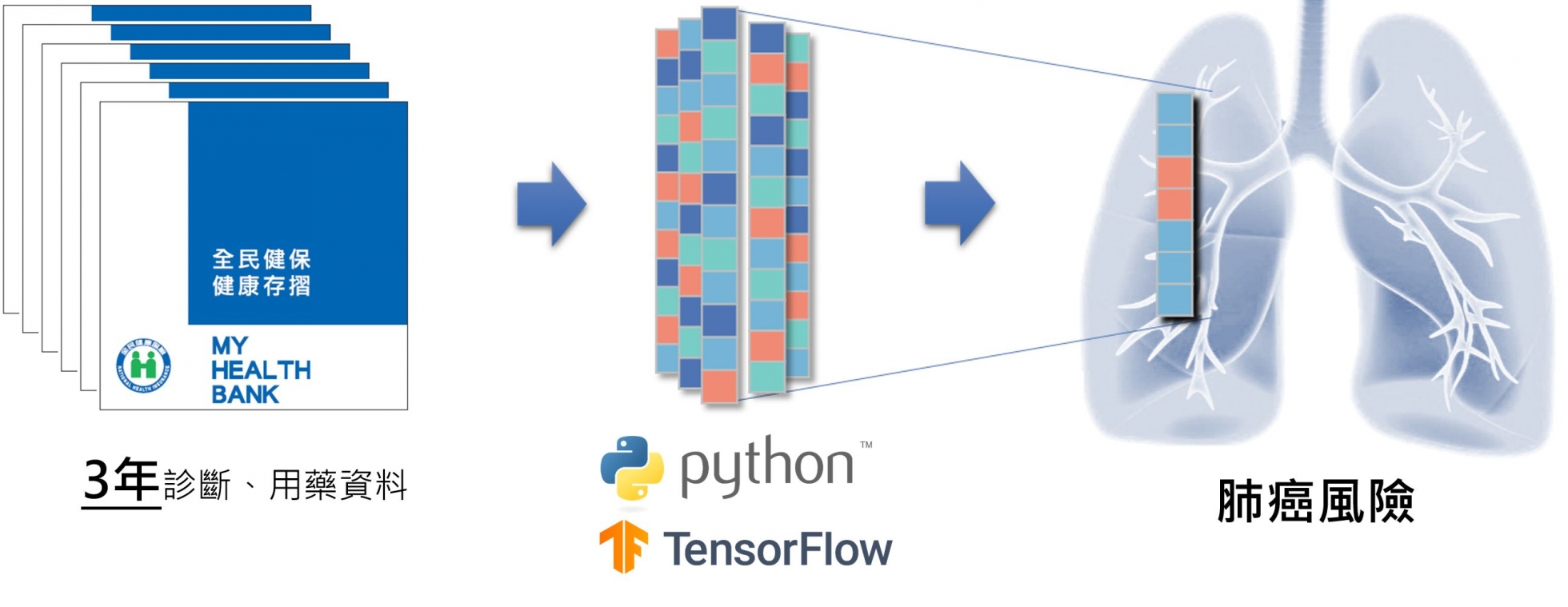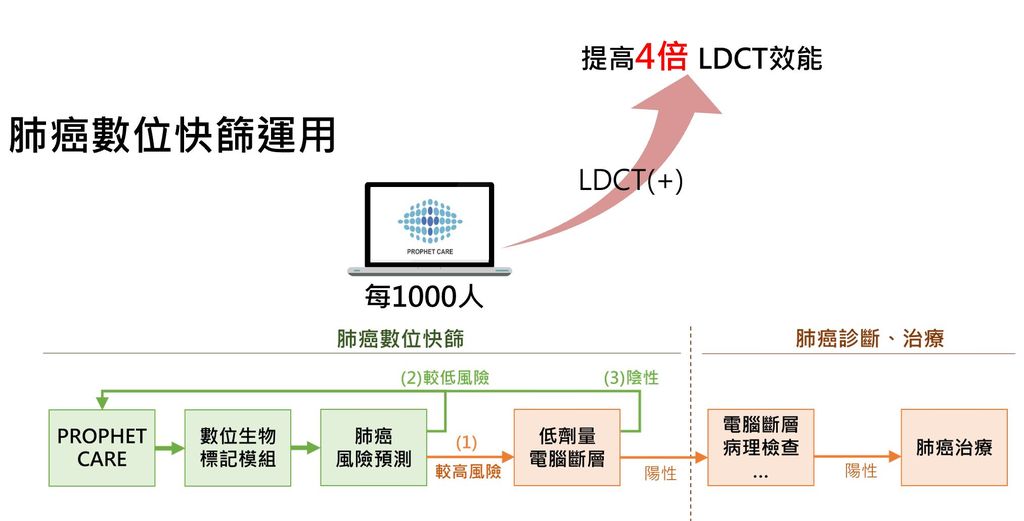Introduction
The technology, PROPHET (Prediction of Principle Health Threat), utilizes disease trajectories to transform the timeline of medical diagnoses and medication data into phenotype data profiles. This approach is employed to create a digital biomarker prediction model for lung cancer and develop a digital lung cancer screening module, achieving an AUROC (Area Under the Receiver Operating Characteristic curve) of up to 90%. According to prospective clinical validation, individuals assessed as high-risk by the model show approximately 40% of chest X-ray results indicating lung nodules or fibrotic changes. Through the development of digital lung cancer screening based on disease trajectories, in conjunction with our national health records, we aim to facilitate rapid, cost-effective, and comprehensive lung cancer screening in our country.
Features / strengths
This technology achieves an AUROC of up to 90%, even in populations without a history of lung disease, with an AUROC of 80%. Additionally, by leveraging Taiwan's health records, there is no need for manual data entry; the system can directly incorporate all relevant data. It also has the capability to substitute for smoking history and smoking risk with clinical diagnoses and medication information. Therefore, it significantly enhances the screening effectiveness of LDCT (Low-Dose Computed Tomography) from the original detection rate of 10 confirmed lung cancer cases per 1,000 LDCT scans to four times that rate, resulting in 40 confirmed lung cancer cases per 1,000 LDCT scans.
Specification in detail





